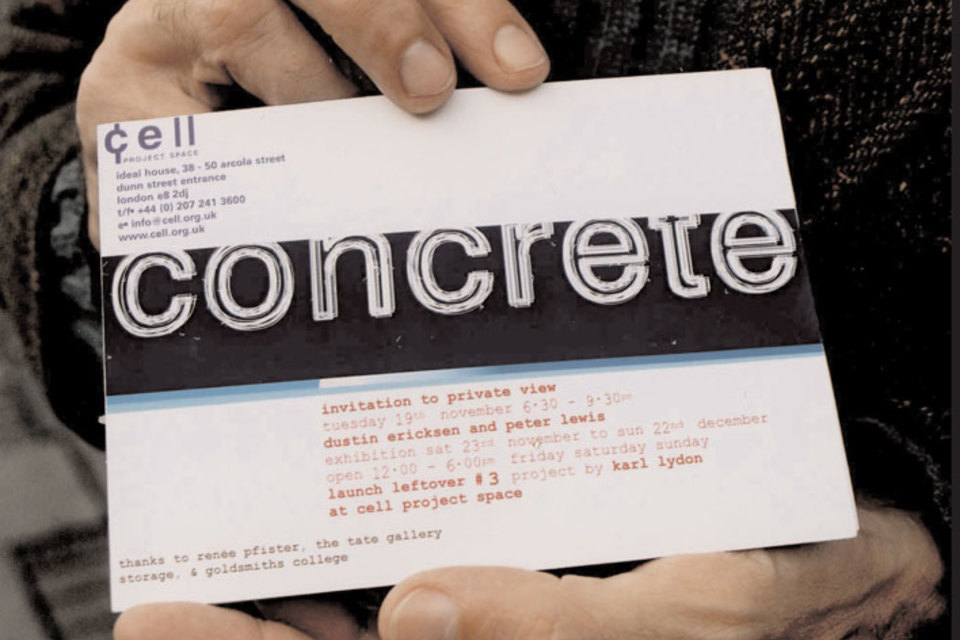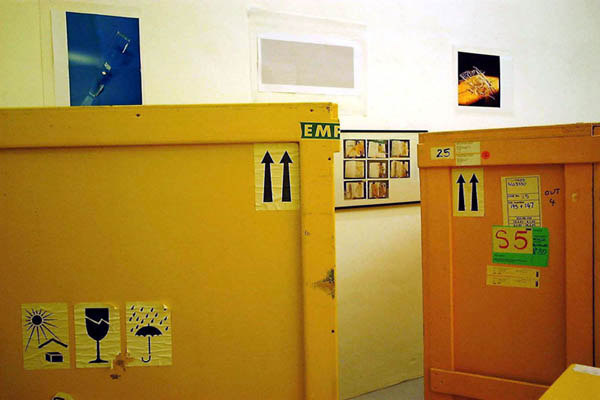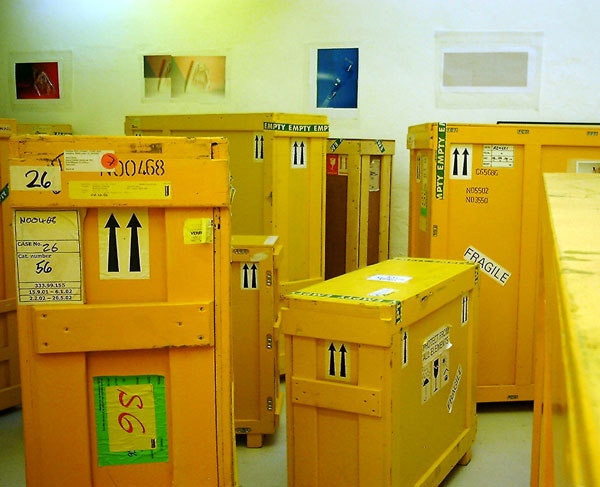Concrete
collaboration between Peter Lewis & Dustin Ericksen

Swallow the poison and buy the antidote. It seems, they say, the less one tries the more concrete the deal. Advice put together with an even fuzzier logic, and whatever happens, apparently, say the artists, happens. What you see is what you get.
Ericksen and Lewis reproduce the clichés of the historical avant-garde by encouraging casual conversation concerning " the concrete ". There is however nothing left to contradict, to hide, or to test, to take to the limit, either seen or unseen, useful or useless, inside or outside. It's old news, leftover. Junk.
These yellow crates are in reality the production side of art's industry. It is uncertain as to how they got them here. " By accident " claims Lewis. Broodthaers, Armleder, Prina, Pardo and others since Duchamp have already drawn on the " crate " and reproduced as reflexive a critique as one could hope for. Theory and practice, institutionally correct. A prescribed poison and antidote. " Concrete " deals another round of the Same.but critique? Of what? The Museum? I guess but just ' stuff ', right? Right.
Ericksen uses perspex to contain scent. They are neither precisely design maquette nor art object, as broken pieces, but they smell sweet, ' feminine ', staged intentionally to force an affinity with Lewis' slogan tagged watercolours, derived from soft porn magazines and business study manuals. Urbane, "sauvage", like the after-shave or reminiscent of Berlin's 1980s Neue Wilder painters? Maybe. Porn, perfume, perspex, Eddie Murphy on video, ' keepin' it together '. In funky Hollywood style, Ericksen and Lewis hype up the rhetoric of seriously corrective " critique " to the script of " dumb and dumber ".
Historical exemplars in the line of the concrète movements and nostalgia for the radical chic of Sâo Paulo 66 ? One may ask but to no avail, inviting insult to injury. What relation if any is formed between the partnership's bricolaged historical musings? None. Apparently, however, the show reveals that there is more to it than what you see. Not just the arbitrary sum of its parts, the work is to be donated back to the Tate.
© flag 2002 curated by Dustin Ericksen & Peter Lewis with special thanks to the Tate Gallery, Goldsmiths College Department of Visual Arts and Renée Pfister

